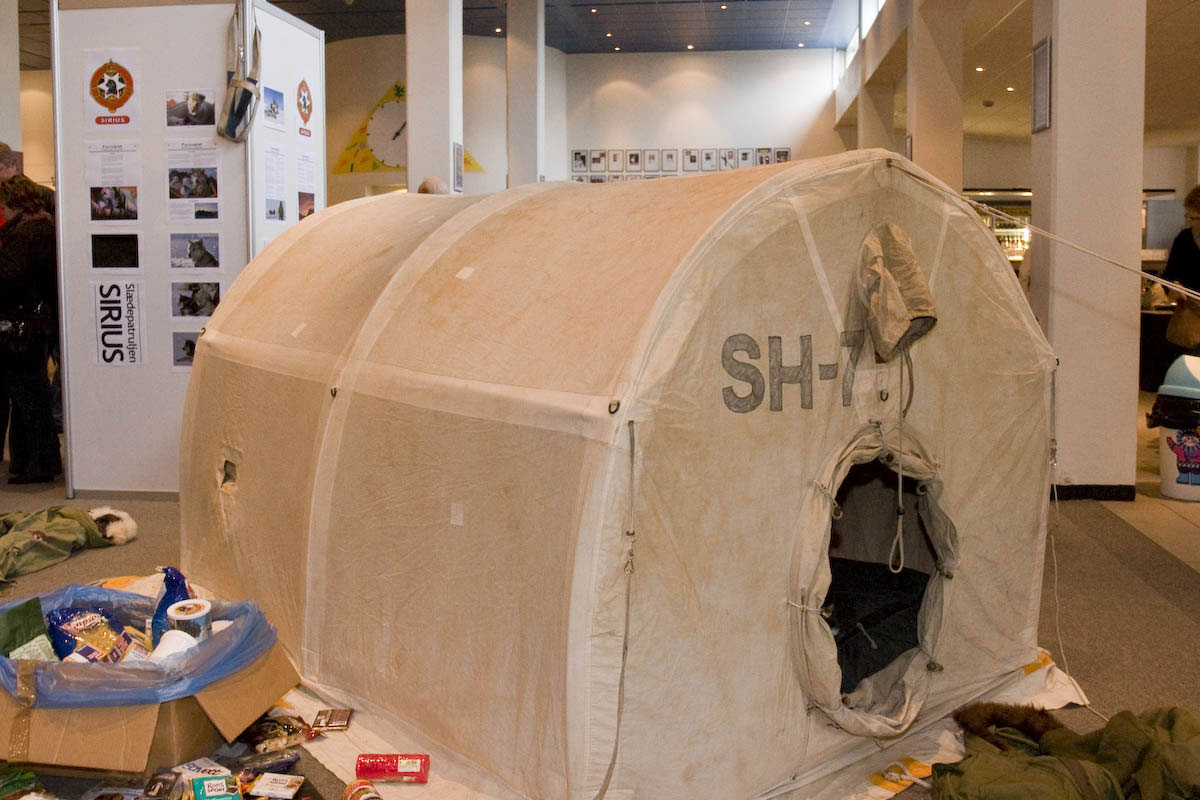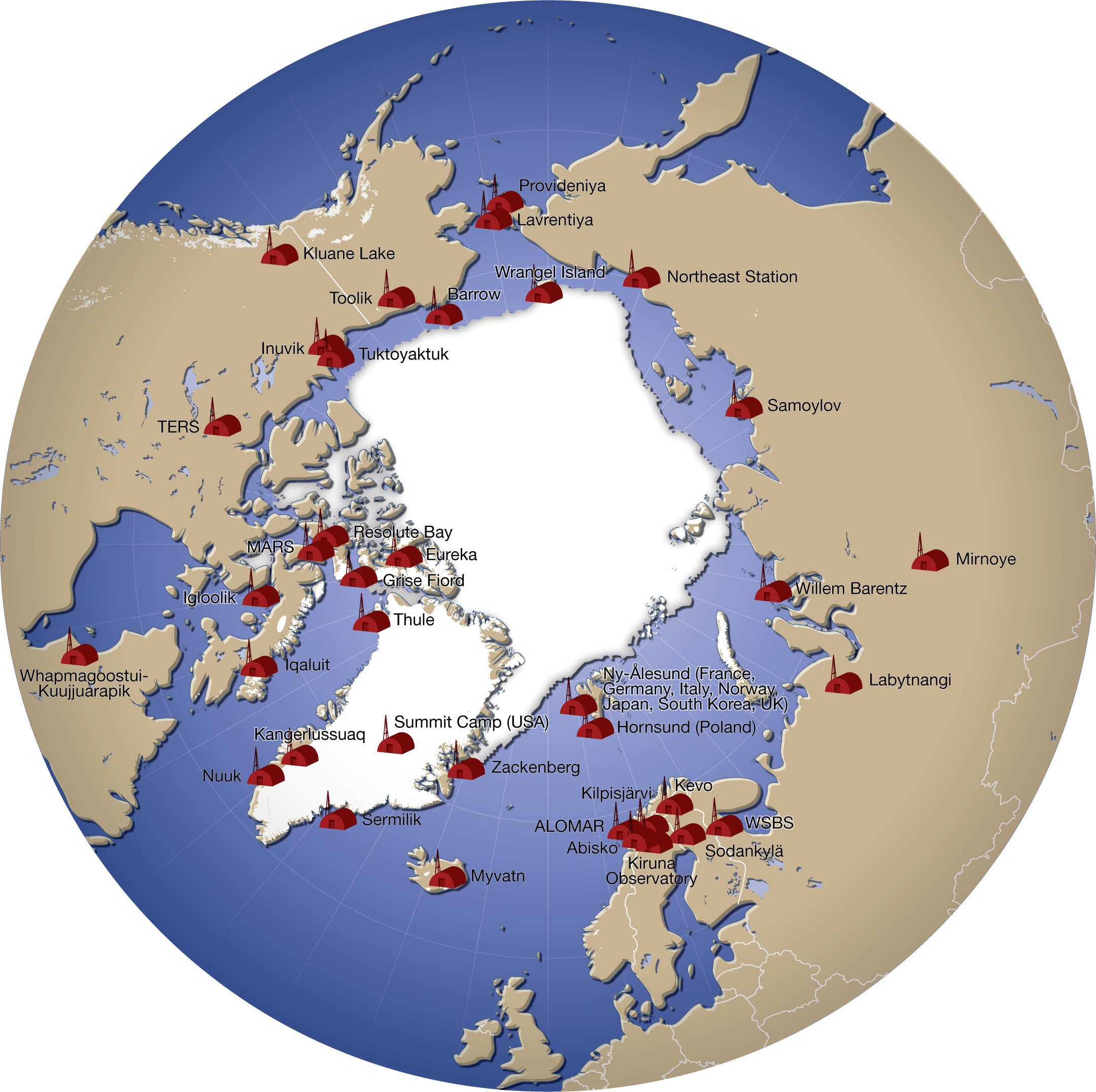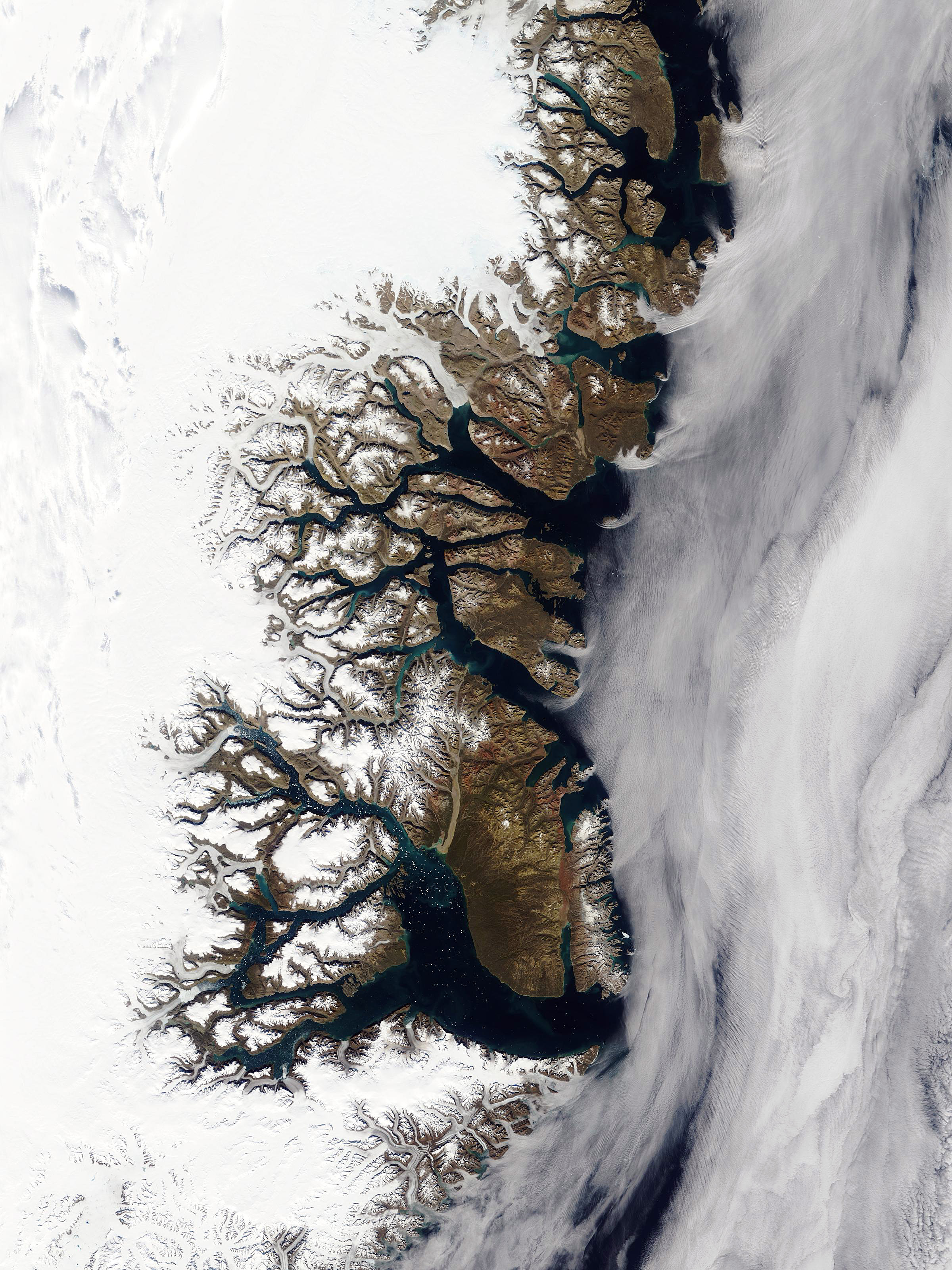|
Daneborg
Daneborg (or Daneborg Station) is a station on the south coast of Wollaston Foreland peninsula of northeast Greenland, at the mouth of Young Sund emptying into Greenland Sea. Daneborg serves as the headquarters for the SIRIUS Patrol, the dog sled patrollers of the Northeast Greenland National Park, the largest national park in the world. The number of persons at the station is few and varies considerably from summer to winter. Daneborg is the most populated of stations in the park, with an over-wintering population of 12. Daneborg has an approximately long airstrip . History The previous sledge patrol headquarters, Eskimonaes ''(Eskimonæs)'', 27 km southwest of later Daneborg at Dødemandsbugten on the south coast of Clavering Ø, which had also been the location of the last Inuit settlement in Northeast Greenland (1823), was destroyed by German World War II invaders on March 23, 1943. The story of the wartime efforts of the North-East Greenland Sledge Patrol under Ib P ... [...More Info...] [...Related Items...] OR: [Wikipedia] [Google] [Baidu] |
Young Sund
Young Sound ( da, Young Sund) is a marine channel with a fjord structure in King Christian X Land, East Greenland. Administratively it is part of the Northeast Greenland National Park zone. History The fjord was given the name "Young’s Bay" by William Scoresby in 1822. He named it in honour of British scientist Thomas Young (1773– 1829), secretary of the Board of Longitude. During the 1869–70 Second German North Polar Expedition this body of water was surveyed by Carl Koldewey, who used the name "Tyrolerfjord" for the whole water body. Later, during the 1929–1930 Expedition to East Greenland, Lauge Koch reinstated the name "Young Sund" for the outer section of the water body. Just north of Daneborg there was a Danish hunting station named Sandodden which is now abandoned. Geography Young Sound opens in the northern side of the mouth area of Gael Hamke Bay, north of Cape Breusing. It extends north and northeast of Clavering Island and southwest of Wollaston Foreland; to ... [...More Info...] [...Related Items...] OR: [Wikipedia] [Google] [Baidu] |
Sirius Dog Sled Patrol
The Sirius Dog Sled Patrol ( da, Slædepatruljen Sirius), known informally as ''Siriuspatruljen'' (the Sirius Patrol) and formerly known as ''North-East Greenland Sledge Patrol'' and ''Resolute Dog Sled Patrol'', is an elite Danish naval unit. It conducts long-range reconnaissance patrolling, and enforces Danish sovereignty in the Arctic wilderness of northern and eastern Greenland, an area that includes the Northeast Greenland National Park, which is the largest national park in the world. Patrolling is usually done in pairs and using dog sleds with about a dozen dogs, sometimes for four months and often without additional human contact. The Sirius Dog Sled Patrol has the ability to engage militarily, and has done so historically. Its purpose is to maintain Danish sovereignty and police its area of responsibility.Formål og ... [...More Info...] [...Related Items...] OR: [Wikipedia] [Google] [Baidu] |
North-East Greenland Sledge Patrol
The Sirius Dog Sled Patrol ( da, Slædepatruljen Sirius), known informally as ''Siriuspatruljen'' (the Sirius Patrol) and formerly known as ''North-East Greenland Sledge Patrol'' and ''Resolute Dog Sled Patrol'', is an Special forces, elite Denmark, Danish naval unit. It conducts LRRP, long-range reconnaissance patrolling, and enforces Danish sovereignty in the Arctic wilderness of northern and eastern Greenland, an area that includes the Northeast Greenland National Park, which is the largest national park in the world. Patrolling is usually done in pairs and using dog sleds with about a dozen Sled dog, dogs, sometimes for four months and often without additional human contact. The Sirius Dog Sled Patrol has the ability to engage militarily, and has done so historically. Its purpose is to maintain Danish sovereignty and police its area of responsibility. [...More Info...] [...Related Items...] OR: [Wikipedia] [Google] [Baidu] |
Northeast Greenland National Park
Northeast Greenland National Park ( kl, Kalaallit Nunaanni nuna eqqissisimatitaq, da, Grønlands Nationalpark) is the world's largest national park and the 10th List of largest protected areas in the world, largest protected area (the only larger protected areas all consist mostly of sea). Established in 1974 and expanded to its present size in 1988, it protects of the interior and northeastern coast of Greenland and is bigger than all but List of countries and outlying territories by total area, 29 of the world's 195 countries. It was the first List of national parks of Denmark, national park to be created in the Kingdom of Denmark and remains Greenland's only national park. It is the northernmost national park in the world. It is the second largest by area of any second level subdivision of any country in the world trailing only the Qikiqtaaluk Region, Qikiqtaaluk Region, Nunavut, Canada. Geography The park shares borders, largely laid out as Great Circle, straight lines, with ... [...More Info...] [...Related Items...] OR: [Wikipedia] [Google] [Baidu] |
List Of Research Stations In The Arctic
A number of governments maintain permanent research stations in the Arctic. Also known as Arctic bases, polar stations or ice stations, these bases are widely distributed across the northern polar region of Earth. Historically few research stations have been permanent. Most of them were temporary, being abandoned after the completion of the project or owing to lack of funding to continue the research. Some of these were military or intelligence stations (listening posts) created as a result of the proximity of the U.S. and Soviet Union to each other's landmass across the polar region. Ice stations are constructed on land or on ice that rests on land, while others are drifting ice stations built on the sea ice of the high latitudes of the Arctic Ocean. Research stations Drifting ice stations *Fletcher's Ice Island, US (1952 - 1978) In fiction *Ice Station Zebra (novel), by Alistair MacLean **Ice Station Zebra (1968 film) **Ice Station Zebra a song by Jack White on Boar ... [...More Info...] [...Related Items...] OR: [Wikipedia] [Google] [Baidu] |
Wollaston Foreland
Wollaston Foreland ( da, Wollaston Forland) is a peninsula in King Christian X Land, East Greenland. Administratively it belongs to the NE Greenland National Park area. History This peninsula was named by William Scoresby in 1822 as a testimony of respect to William Hyde Wollaston. It was also surveyed and explored by the Second German North Polar Expedition 1869–70 led by Carl Koldewey. The Danish Sirius Dog Sled Patrol has its headquarters at Daneborg on the southeastern shore. The Zackenberg research station is situated further West, near Young Sound. Geography Wollaston Foreland is bounded in the north by the Lindeman Fjord and Albrecht Bay of Hochstetter Bay, in the east by the Greenland Sea, in the south by the Young Sound and Gael Hamke Bay''Prostar Sailing Directions 2005 Greenland and Iceland Enroute'', p. 101 and in the west by A. P. Olsen Land. To the south and southwest across Young Sound lies large Clavering Island, close off northeast Sabine Island, and cl ... [...More Info...] [...Related Items...] OR: [Wikipedia] [Google] [Baidu] |
Eskimonaes
Clavering Island ( da, Clavering Ø) is a large island in eastern Greenland off Gael Hamke Bay, to the south of Wollaston Foreland. The Eskimonaes ''(Eskimonæs)'' radio and weather station was on this island. It was staffed by Danish scientists and was captured by German troops in 1943. The place where the station stood had also been the location of the last Inuit settlement in Northeast Greenland around 1823. History The island was named by the second German North Polar Expedition 1869–70 as ''Clavering Insel'' to commemorate Douglas Charles Clavering (1794–1827), commander of the '' Griper'' on the 1823 voyage, which explored the area and, at the southern shore of this island made the first (and last) encounter that Europeans made with the now extinct Northeast-Greenland Inuit. In late August 1823, Clavering and the crew of the ''Griper'' encountered a band of twelve Inuit, including men, women and children. In his journal, Clavering described their seal-skin tent, cano ... [...More Info...] [...Related Items...] OR: [Wikipedia] [Google] [Baidu] |
Clavering Ø
Clavering Island ( da, Clavering Ø) is a large island in eastern Greenland off Gael Hamke Bay, to the south of Wollaston Foreland. The Eskimonaes ''(Eskimonæs)'' radio and weather station was on this island. It was staffed by Danish scientists and was captured by German troops in 1943. The place where the station stood had also been the location of the last Inuit settlement in Northeast Greenland around 1823. History The island was named by the second German North Polar Expedition 1869–70 as ''Clavering Insel'' to commemorate Douglas Charles Clavering (1794–1827), commander of the '' Griper'' on the 1823 voyage, which explored the area and, at the southern shore of this island made the first (and last) encounter that Europeans made with the now extinct Northeast-Greenland Inuit. In late August 1823, Clavering and the crew of the ''Griper'' encountered a band of twelve Inuit, including men, women and children. In his journal, Clavering described their seal-skin tent, cano ... [...More Info...] [...Related Items...] OR: [Wikipedia] [Google] [Baidu] |
USCGC Storis (WMEC-38)
USCGC ''Storis'' (WAGL-38/WAG-38/WAGB-38/WMEC-38) was a light icebreaker and medium endurance cutter which served in the United States Coast Guard for 64 years and 5 months, making her the oldest vessel in commission with the Coast Guard fleet at the time of her decommissioning. World War II The ship was laid down by the Toledo Shipbuilding Company of Toledo, Ohio, on 14 July 1941. ''Storis'' was launched on 4 April 1942 and commissioned on 30 September 1942 as an ice patrol tender. Initially assigned to the North Atlantic during World War II, ''Storis'' participated in the Greenland Patrols.Scheina, p 91 She was tasked with patrolling the east coast of Greenland to prevent the establishment of German weather stations. During her first years, ''Storis'' operated in the very waters from which her name was derived. Originally to be named ''Eskimo'', the U.S. Department of State objected to the name of the new cutter on the basis that the natives of Greenland would be offended by th ... [...More Info...] [...Related Items...] OR: [Wikipedia] [Google] [Baidu] |
Desert Climate
The desert climate or arid climate (in the Köppen climate classification ''BWh'' and ''BWk''), is a dry climate sub-type in which there is a severe excess of evaporation over precipitation. The typically bald, rocky, or sandy surfaces in desert climates are dry and hold little moisture, quickly evaporating the already little rainfall they receive. Covering 14.2% of earth's land area, hot deserts are the second most common type of climate on earth after the polar climate. There are two variations of a desert climate according to the Köppen climate classification: a hot desert climate (''BWh''), and a cold desert climate (''BWk''). To delineate "hot desert climates" from "cold desert climates", there are three widely used isotherms: most commonly a mean annual temperature of , or sometimes the coldest month's mean temperature of , so that a location with a ''BW'' type climate with the appropriate temperature above whichever isotherm is being used is classified as "hot arid sub ... [...More Info...] [...Related Items...] OR: [Wikipedia] [Google] [Baidu] |
Köppen Climate Classification
The Köppen climate classification is one of the most widely used climate classification systems. It was first published by German-Russian climatologist Wladimir Köppen (1846–1940) in 1884, with several later modifications by Köppen, notably in 1918 and 1936. Later, the climatologist Rudolf Geiger (1894–1981) introduced some changes to the classification system, which is thus sometimes called the Köppen–Geiger climate classification system. The Köppen climate classification divides climates into five main climate groups, with each group being divided based on seasonal precipitation and temperature patterns. The five main groups are ''A'' (tropical), ''B'' (arid), ''C'' (temperate), ''D'' (continental), and ''E'' (polar). Each group and subgroup is represented by a letter. All climates are assigned a main group (the first letter). All climates except for those in the ''E'' group are assigned a seasonal precipitation subgroup (the second letter). For example, ''Af'' indi ... [...More Info...] [...Related Items...] OR: [Wikipedia] [Google] [Baidu] |
Polar Climate
The polar climate regions are characterized by a lack of warm summers but with varying winters. Every month in a polar climate has an average temperature of less than . Regions with polar climate cover more than 20% of the Earth's area. Most of these regions are far from the equator and near the poles, and in this case, winter days are extremely short and summer days are extremely long (could last for the entirety of each season or longer). A polar climate consists of cool summers and very cold winters, which results in treeless tundra, glaciers, or a permanent or semi-permanent layer of ice. It is identified with the letter E in the Köppen climate classification. Subtypes There are two types of polar climate: ET, or tundra climate; and EF, or ice cap climate. A tundra climate is characterized by having at least one month whose average temperature is above , while an ice cap climate has no months averaging above . In a tundra climate, even coniferous trees cannot grow, but o ... [...More Info...] [...Related Items...] OR: [Wikipedia] [Google] [Baidu] |
.jpg)








